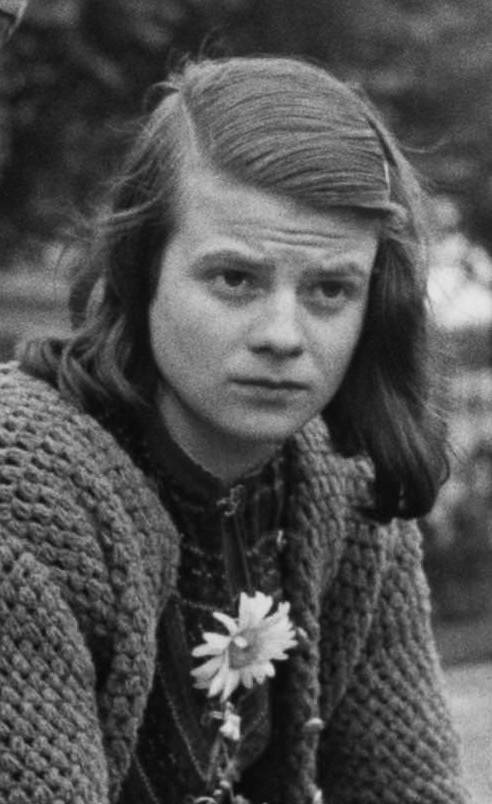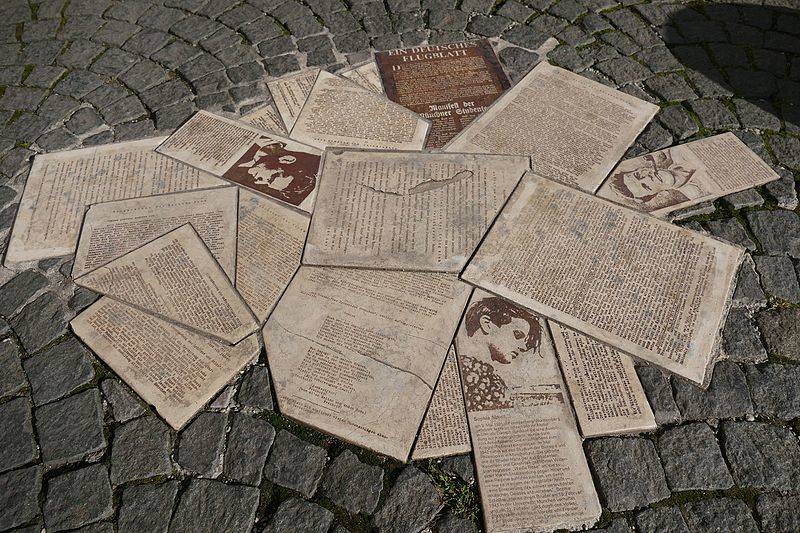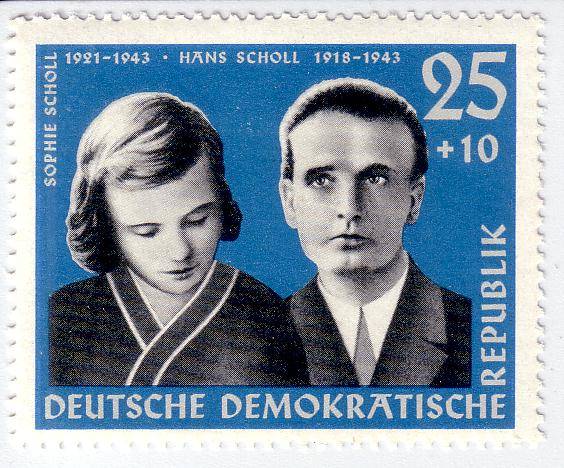Sophie Scholl, Hans Scholl, and the White Rose movement stood up to the evils of the Nazis. Though they died for their beliefs, their message lived on.

Authenticated News/Archive Photos/Getty ImagesWhite Rose members Hans Scholl (left) and his sister, Sophie Scholl. Circa 1940.
Sophie Scholl was just 21 years old when she was executed along with her brother, 24-year-old Hans Scholl, on Feb. 22, 1943.
The Scholl siblings had been arrested three days earlier and undergone nearly constant interrogation by the Gestapo before their trial. Nazi judge Roland Freisler, infamous for handing out death sentences in some 90 percent of his cases, made short work of the proceedings before sentencing both Hans Scholl and Sophie Scholl to death.
What had they done to warrant such a punishment at such a young age? They had dared to found the White Rose movement that opposed the Nazis.
Hans and Sophie Scholl initially followed the expected paths for German children growing up in the 1930s: They joined the Hitler Youth and enthusiastically participated in the obligatory activities.
However, the Scholl siblings were atypical in that their father was a virulent anti-Nazi despite being mayor of their town. Although Robert Scholl never forbade his children from participating in Nazi activities, he encouraged them to think for themselves, telling a young Sophie, “What I want most of all is that you live in uprightness and freedom of spirit, no matter how difficult that proves to be.”

WikimediaSophie Scholl
Both siblings eventually became disillusioned with the Nazi party. Having witnessed the ugliness of the war firsthand thanks to his time in the medical corps, Hans Scholl then gathered a few like-minded fellow students at the University of Munich in 1942 in order to express their anti-Nazi beliefs.
The group initially just painted slogans such as “Hitler mass murder” or “freedom” on public buildings. But these seemingly small acts were tremendously risky because the Nazis closely watched for internal dissent.

Wikimedia CommonsJudge Roland Freisler, who tried the Sophie Scholl case.
Sophie Scholl soon joined Hans Scholl at the University of Munich to study and soon became a member of the resistance organization, which dubbed itself “The White Rose.”
The members of the White Rose committed themselves to exposing the ugly truth behind Nazi propaganda. They wrote and printed anti-Nazi leaflets that they then stealthily distributed all over the campus and city.
“Isn’t it true that every honest German is ashamed of his government these days?,” read the group’s first pamphlet. “Why do you allow these men who are in power to rob you step by step, openly and in secret, of one domain of your rights after another,” read the third.
The White Rose was even able to recruit one of their professors to write one of the leaflets, which urged the country to rise up, claiming “the German name will be forever defamed if German youth does not finally arise, avenge, and atone, if he does not shatter his tormentor and raise up a new intellectual Europe.”
While the White Rose’s resistance activities did not involve sabotage or subterfuge, they knew they were risking their lives for the simple act of daring to express an opinion. Soon, Hans Scholl and Sophie Scholl did indeed pay with their lives.

Wikimedia CommonsMemorial to the White Rose at Munich University.
The Scholl siblings’ participation in the White Rose movement came to an end in early 1943 after a school janitor spotted Sophie dropping leaflets at the university. Despite days of interrogation, the Scholls refused to give up any of their friends, with Hans even insisting he had printed all the leaflets on his own.
In a rare moment of sympathy, the Gestapo offered Sophie a reduced sentence if she would deny her own role in creating the pamphlets, but she turned them down, refusing to betray her brother and insisting she be given the same punishment as him.
That punishment would be death by beheading. On Feb. 22, after being allowed to bid their parents goodbye, Hans Scholl and Sophie Scholl were led to the guillotine. The White Rose movement had displayed public opposition to the Nazis and the regime made a brutal example of them.
“How can we expect righteousness to prevail when there is hardly anyone willing to give himself up individually to a righteous cause?,” Sophie Scholl said as her final words just before she was killed. “Such a fine, sunny day, and I have to go, but what does my death matter, if through us, thousands of people are awakened and stirred to action?”

Wikimedia CommonsToday, Sophie Scholl and Hans Scholl are important symbols in Germany, as evidenced by this commemorative stamp.
Just a few days after the execution, their final pamphlet was being circulated with an additional line printed at the top: “despite everything their spirit lives on.”
Their message certainly lived on. Word of the pamphlets made its way back to Britain, and the Royal Air Force began reproducing them and dropping the White Rose’s work all over Germany. Even in death, Hans Scholl and Sophie Scholl could not be silenced.
After this look at Sophie Scholl, Hans Scholl, and the White Rose movement, see some of the most powerful photos taken during the Holocaust. Then, read up on the Nazis’ horrific Lebensborn program intended to breed a master race.





